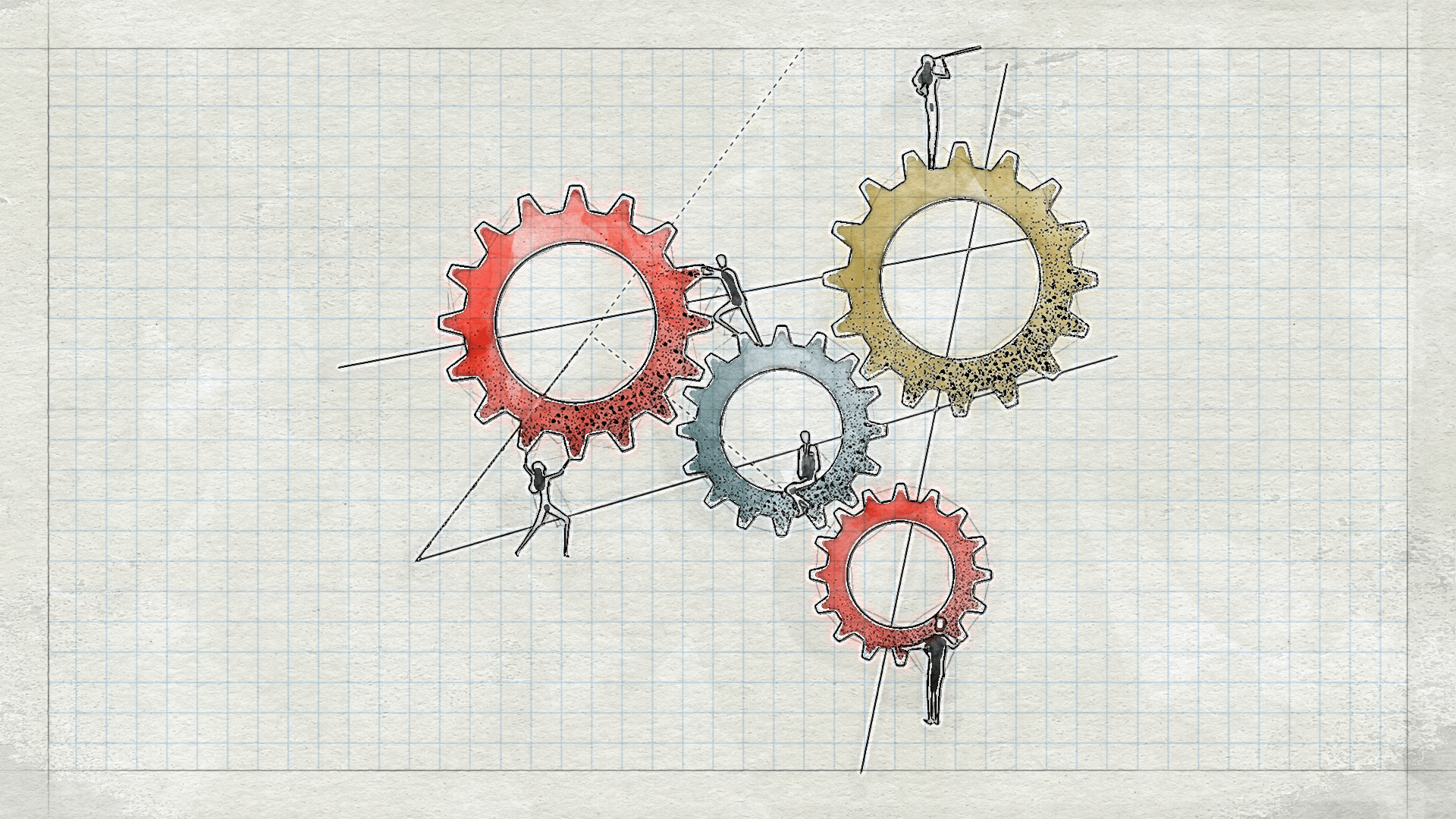As a kid I used to spend a lot of time trying to put together 1000-piece puzzles. And a lot of those times I felt frustrated and stuck. In an attempt to move along I would often progress in a racing hurry only to suffer the same feeling again. Seems obvious right? Building a High-Trust High-Performance culture, can feel the same it is time consuming and frustrating. Yet the process is the same – look at the big picture, get all the right pieces, build sections, and bring it all together. Always start with building sections, pick up one promising piece, and then place the remaining pieces around it. Do it over and over, and the puzzle is complete in no time. When building culture – that one promising piece is people managers!
There is an obvious reason for this. Managers have direct contact with the vast majority of your workforce and therefore have the biggest influence on your employees’ day to day experiences at the workplace. And, just as cramming the incorrect piece would almost always result in feeling trapped, not having managers who properly represent the organisation’s culture and principles might result in culture dilution – a state where “How we do things around here” (everyday was of working) does not live up to “How we want to do things” (our stated vision and values). It can even lead to culture clash, where “How we do things around here” contradicts “How we want to do things”. This is especially true when there are a high number of lateral hires, typically in crucial senior and middle management positions.
Luckily, managers, unlike jigsaw puzzle parts, can be coached to fit in.
So, what can you do to ensure that managers are active participants in your company’s cultural strategy? Investing in leadership development programs is definitely a time tested option. However, these programs yield results in the long term and may not be available to managers at all levels of the organisation. Experts also believe that often these programs are no more effective in producing great managers, than short term programs or one-off training seminars are.
And hence at the Great Manager Institute we focus on everyday behaviours. Having worked with thousands of leaders and managers in some of the best organisations across industries we know that consciously curating everyday behaviours or “How we do things around here” is what builds culture. While anyone can be trained to use specific tools {systems}, achieving the desired behaviour needs to be a conscious and continuous effort that is imprinted at every level of the company. Designing powerful manager-led people practises hold the key to shaping behaviour.
Our research shows that strong leadership is built on three pillars – Connect, Develop, Inspire. When leaders and managers who build strong interpersonal connections with their team, take interest in the team’s personal and professional growth, and help team members connect with the big picture of the organisation, are more effective at fostering a high-trust high-performance culture in the organisation.
Here are some examples of powerful manager-led people practises that create high-trust high-performance culture.
CONNECT
Focussing on connect, Managers can build strong interpersonal connections and foster a sense of psychological safety within their team.
Consider a practice like Toss the Ball. Every two weeks, a manager has a 30-minute “All videos on” meeting. In a meet, two team members are chosen to start the session. The nominated members toss and catch a paper ball (virtual actions). The individual who lands the ball must provide a one-line feedback to the opponent before tossing the ball to someone else. And the process repeats till 30 mins are up. This simple manager-led practice encourages openness, transparency, and psychological safety in the team.
How are you doing? Is a practice to demonstrate empathy and douse crises arising due to poor planning. This is a fortnightly call with all team members, to give them progress and key updates on the project. In addition, ask them whether they are favourably inspired by their job and if they have any recommendations for improving it.
DEVELOP
Helping team members identify growth opportunities within the organization reinforces the feeling of being a valued member and cared for. Employees who see the possibility of growth at an organisation tend to stay longer.
FutureSync is a conversation between managers and their team members to set realistic expectations of career paths within the organisation. Two goals are set for the year, at least one of which has to be worked on with the manager and the other with the manager’s peers. This enables team members to get external perspectives in identifying strengths and blind spots in an unbiased manner. Additionally, the manager also provides guidance for learning support towards these objectives, ensuring a forward movement for every team member.
This simple practice, The Flying Book finds its roots in the philosophy of the art of giving. A manager at one of India’s largest pharmaceutical companies has initiated it with his team. He introduces a book (related to personal or professional growth) and every person who reads it must pass it on to the next person. This has led to a boost in knowledge sharing within the team and a focus on personal growth.
INSPIRE
There may have been a time when inspiring team members was seen as something only leaders would do, but that time is over. Today, best performing have identified ‘Inspiration and Appreciation’ as one of the biggest differentiators between them and their peers.
Letters of Mission. The manager encourages team members to develop their own “mission statement” that expresses who they are and how they want to contribute to the success of the firm. The letters are further posted on the company’s intranet. A salesperson from this FMCG organisation mentioned his mission as “to indelibly mark our confectionary brand on the heart of every child” and the logistics executive mentioned about “reliably providing our product to every customer, as and when they need it”. Colleagues are often inspired by personal mission statements. In fact, it changes the quality of conversations between peers and enables faster action.
Happy Lottery is a practice of expressing unconditional gratitude to everyone, by everyone. A box is placed on the floor which holds the name of each team member (including the manager). Every week at the end of the team catch-up, the manager picks a team member’s name through the Lottery system. Then the manager, followed by the other team members, shares a few words of gratitude and praise for the one whose name is pulled out. Simple yet profound way of focussing on the positive.
Perhaps your company already has a great work culture, and your managers are constantly reinforcing its values. So, what happens during a period of growth when there is a need to get more people onboard? Effective manager-led practices that are carefully curated may be great custodians of your company’s culture. They can serve as a beacon of light in times of change to every people manager in your organisation, including lateral hires and first-time managers.








